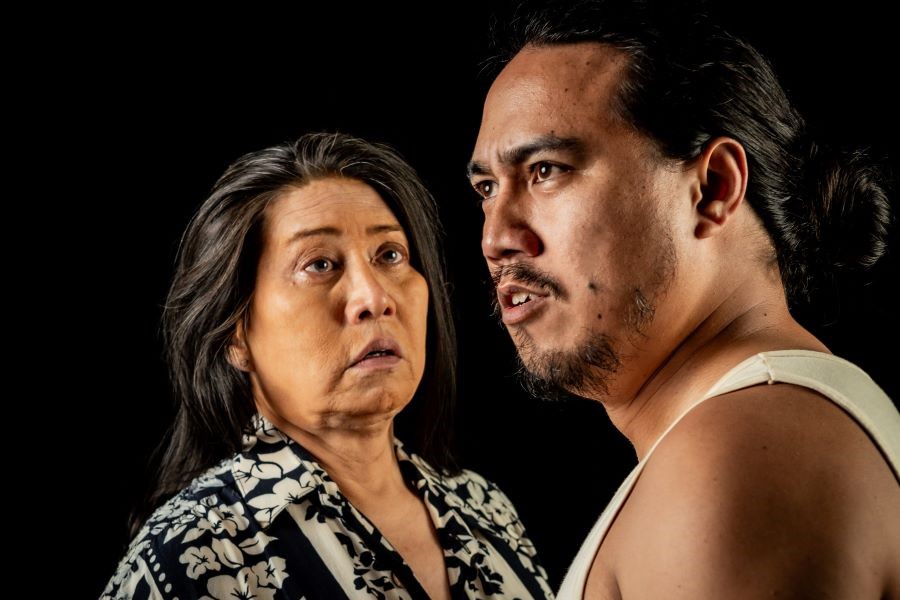In 1972, the first Festival of Pacific Arts and Culture, then called the South Pacific Festival of Arts, was held in Fiji. The delegation from Hawaii was not invited to participate. This year, though, FestPAC—the world’s largest celebration of indigenous Pacific Islanders, showcasing the heritage and artistry of 28 delegations—is being held in Oahu, Hawaii, starting June 6. Originally planned for 2020, the quadrennial festival was postponed due to the coronavirus pandemic. Though Hawaii experienced one of the lowest standardized cumulative death rates from Covid-19 in the country, its economy was one of the hardest hit during lockdown due to its dependence on tourism.
All the while, native Hawaiians have continued to be pushed or priced out of their ancestral lands, despite legislative promises to return nearly 1,000 acres. This has a long history, going back to the 1890s, when the state and federal government claimed the majority of Hawaiian land in an illegal overthrow and annexation of the Kingdom of Hawaiʻi, followed by the Kamehameha Schools trust, county municipalities, and various private entities. (Two of the state’s islands are now in the hands of majority private owners: Niihau by the Robinson Family of Scottish settlers, and Lanai by software exec Larry Ellison.)
Amid this ongoing darkness, hope glimmers, as it often does, through a work of art that reflects and reshapes this history. Longtime collaborators playwright Alani Apio and artistic director Harry Wong III saw an opportunity to realize a shared dream 30 years in the making: to simultaneously stage all three plays in Apio’s The Kāmau Trilogy. The family of plays, focused on healing intergenerational trauma, were each commissioned and individually staged by Kumu Kahua Theatre in Honolulu, beginning with Kāmau in 1994, then Kāmau Aʻe in 1998, and finally Ua Pau in 2019.
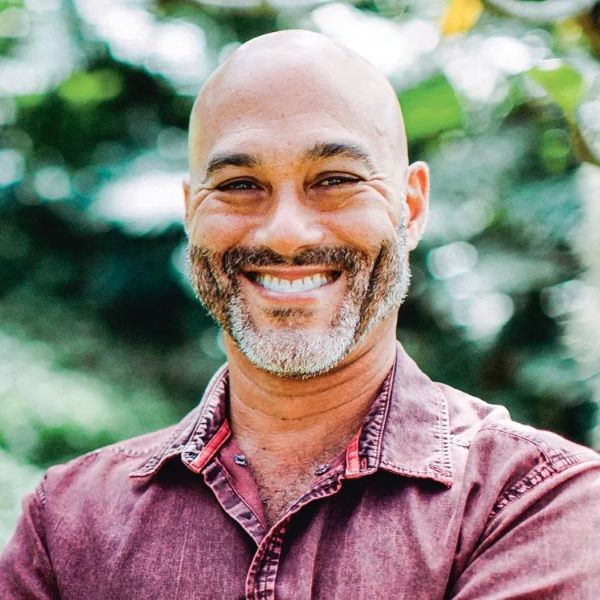
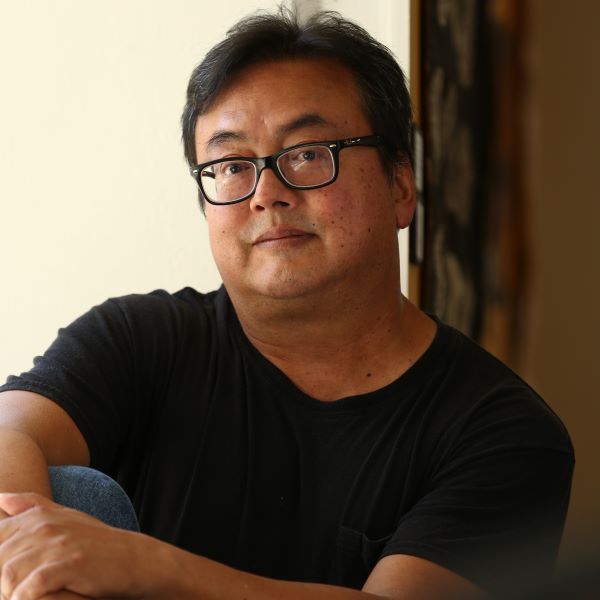
The plays will be presented individually as well as collectively for the entire month of June in an immersive back-to-back experience. Kāmau will be presented on Thursdays, Kāmau Aʻe on Fridays, and Ua Pau on Saturdays at 7 p.m. All three will run in succession for special Sunday marathons, with the first play starting at 1 p.m. and the event concluding around 8 p.m. On marathon days, food from Happy Belly Eatery and a variety of snacks will be available for purchase. The Kāmau Trilogy has also been published by Kamehameha Publishing. Copies of the book will be for sale at the theatre throughout the trilogy’s run.
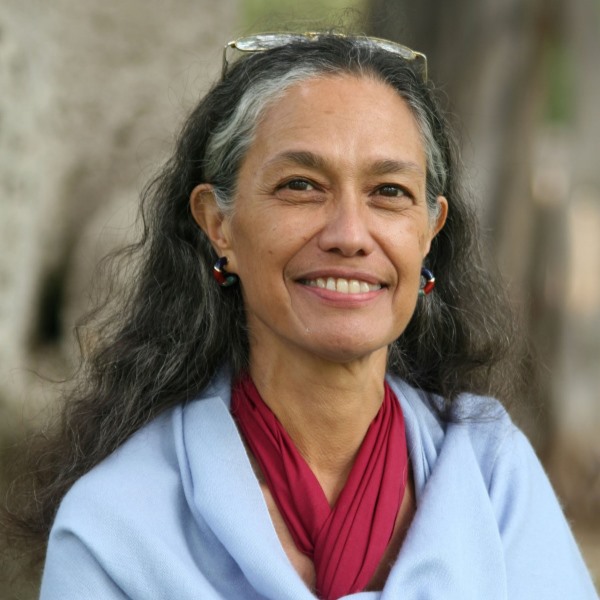
Apio considers the plays semi-autobiographical and inspired by internalized trauma, having lost several relatives to suicide and witnessed the erasure of their heritage. It wasn’t until he took a class with Haunani-Kay Trask, a leader in education and the sovereignty movement at the University of Hawai’i at Mānoa, that he came to understand his own grief as Hawaii’s too.
“I wrote Kāmau as an exorcism and an exploration of all of that,” Apio said in a recent Zoom interview alongside his collaborator, Wong. “It was based on my life until I was about 20. Kāmau Aʻe reflects my life in my 20s, what I saw happening in the sovereignty movement in Hawaii, and the larger society’s actions and reactions to it.”
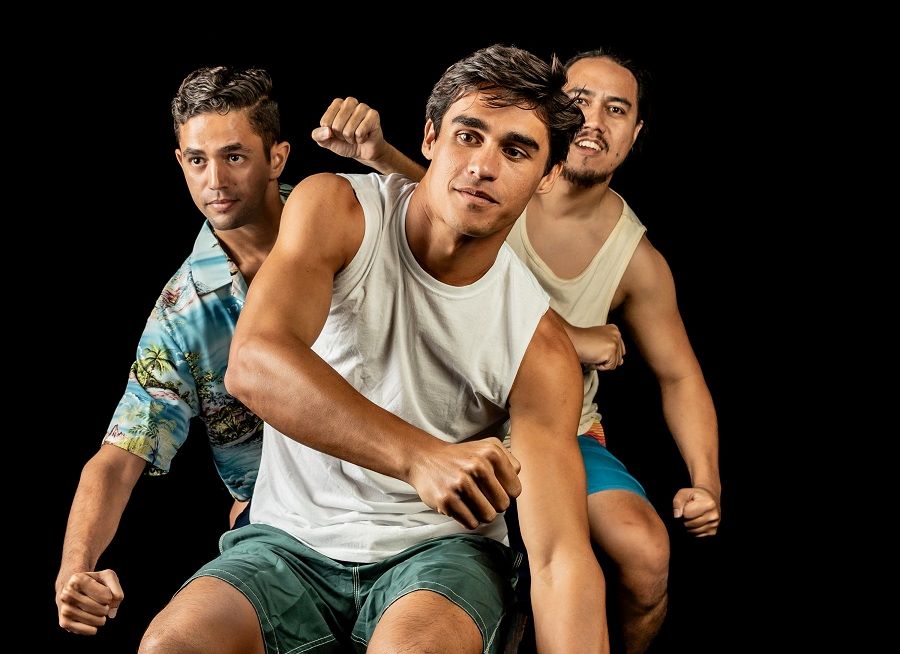
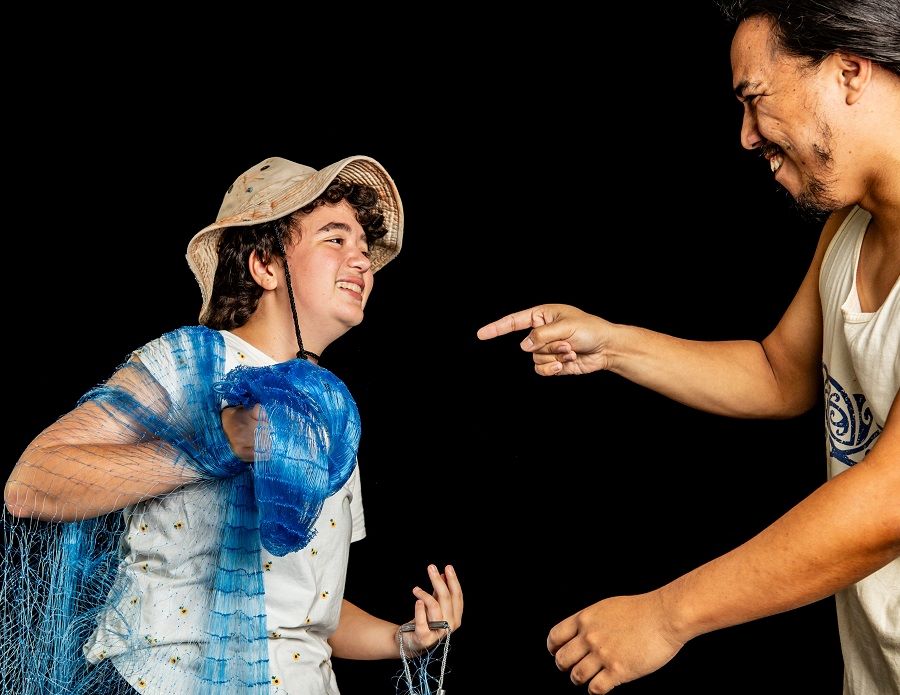
The first play follows Alika, a Kanaka tour guide whose relationship with his cousin Michael is tested when the family is evicted from their ancestral beachside homestead to make way for a luxury resort. The play’s title bears the message “carry on.” The second play picks up a decade later, as Michael, now affiliated with a sovereignty group, and Alika, now the resort manager, vie for control of the home they once knew.
As an actor, playwright, and sculptor from an Oahu fishing family, Apio found the personal aspect of the writing process painful but ultimately healing. “In all of these plays, almost every scene is built on a lived experience,” he said. “My difficulty was, when I wrote it, I lived out every scene, I acted out every scene by myself, alone in a room, crying and yelling and feeling all the emotions so that I could put it on a page. That’s where my deepest pain happened.
“Then, when Harry directed it and they brought it to the stage, yet again, watching it actually play out was incredibly painful,” he continued. “Now, five years later, sitting and working through it every night with Harry in rehearsals, both of us are seeing for the first time all the resonances and echoes that happen throughout the plays, that are embedded in them—but you don’t get to go to that depth unless and until you put them all together. That’s been really rewarding for me.”
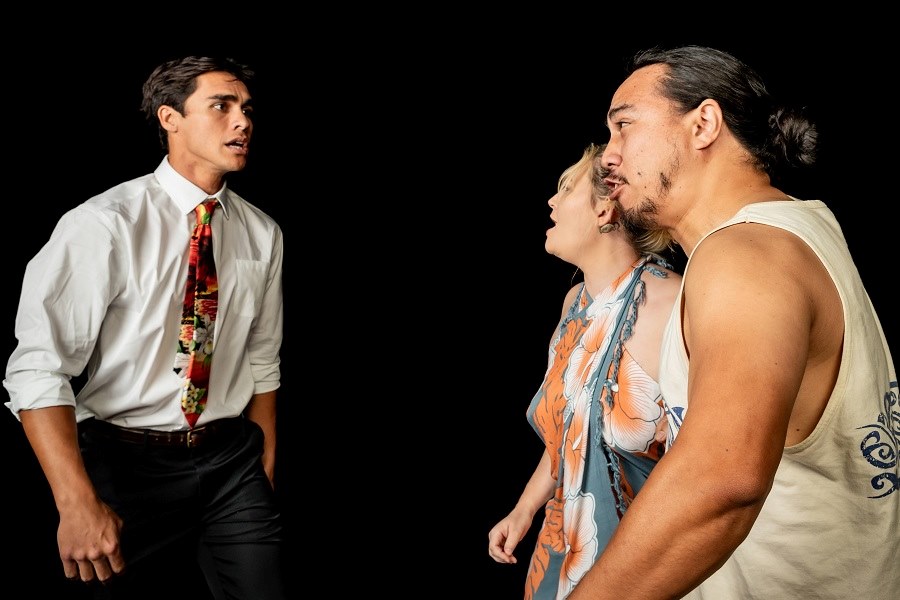
Why the 20-year gap between the second and third plays? Apio explained that he needed more life experience to effectively give these characters closure. “I didn’t realize it at the time, but by the time I had finished writing Kāmau Aʻe, I had literally caught up with my own life. I couldn’t find an honest throughline for the characters.”
He struggled to write the third play for years, until the mid-2010s, when a moment of clarity arose out of a depressive episode. “My life had played itself out enough that I could see where these characters were going to go,” Apio said, “because I am a reflection of these characters, or they are a reflection of parts of me.” And so the cycle was complete.
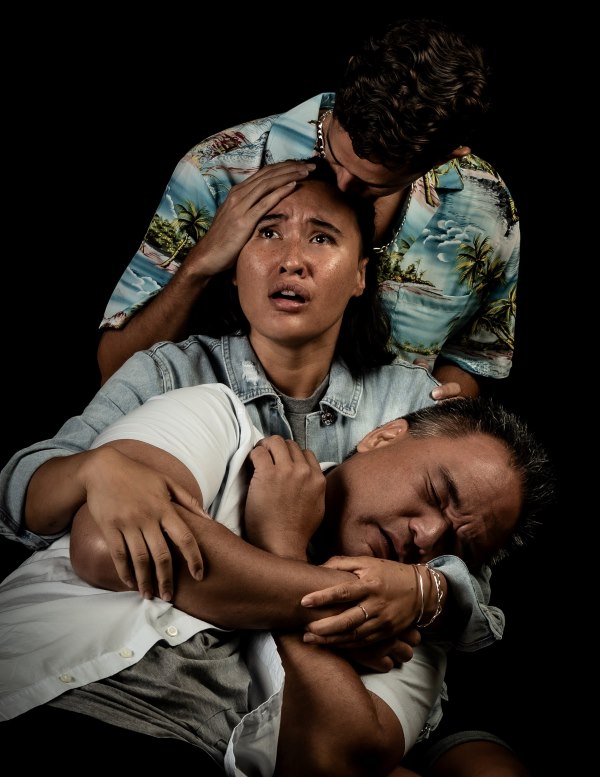
The trilogy concludes with Alika and Michael’s niece Stevie, the daughter of their other cousin, who tragically committed suicide years prior, as she attempts to heal old wounds and free the spirits that haunt her family.
There is a theory in psychology known as mental time travel. It posits that people, particularly those with post-traumatic stress, are able to experience themselves in the past, present, and future, because the cognitive processes of recollection, thought, and expectation are informed by episodic memory. When people remember, they relive. Unsurprisingly, then, the experience of rehearsing these plays in succession has been emotional for the cast and creative team.
Wong, who directed each of the original productions and helped tour them throughout the islands, even staging Kāmau at the 2008 FestPAC in American Samoa, has joined Apio in revisiting the trilogy. He referenced the three tenets from Wallace Stevens’s Notes Toward a Supreme Fiction: “1. It must be abstract, 2. It must change, 3. It must give pleasure.”
The trilogy, he said, does all that and more. In terms of abstraction, he said, “These plays are just taken out of reality. When you come back to it, you’ve changed, so what you’re reading has changed. Or maybe I’ve just read it once today, and I’m going to read it once tonight before I go to sleep, and it’s changed. For me, these plays have changed over time. They’ve developed, I’ve changed, and that’s something that also makes the plays great. This trilogy constantly changes.”
As for pleasure, Wong said, “I keep on telling the actors to have fun, and they look at me like I’m insane because they’re going through the most painful things. But these actors, they’re brave. I mean, they go for it.”
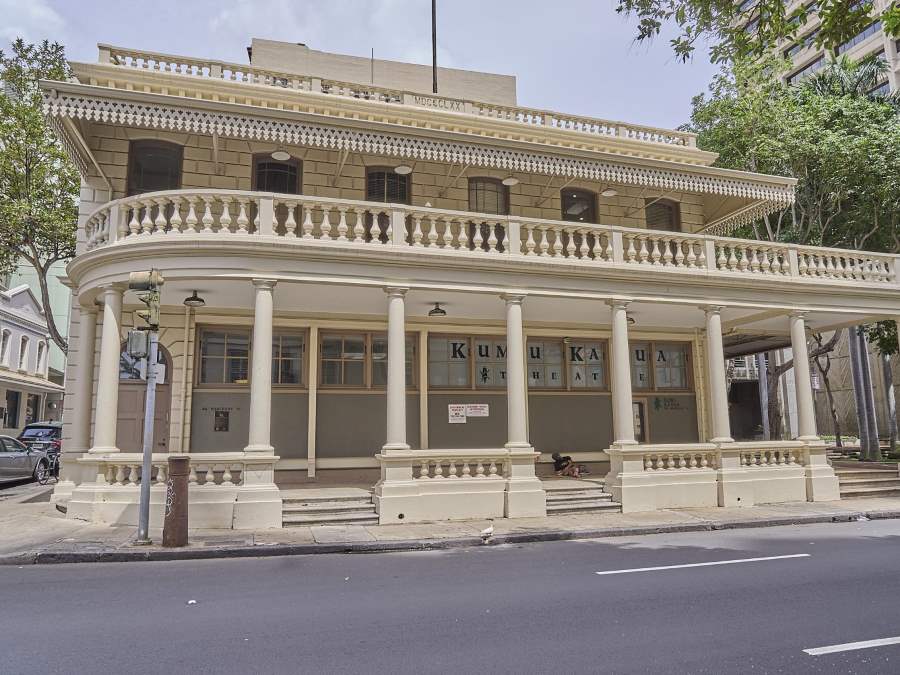
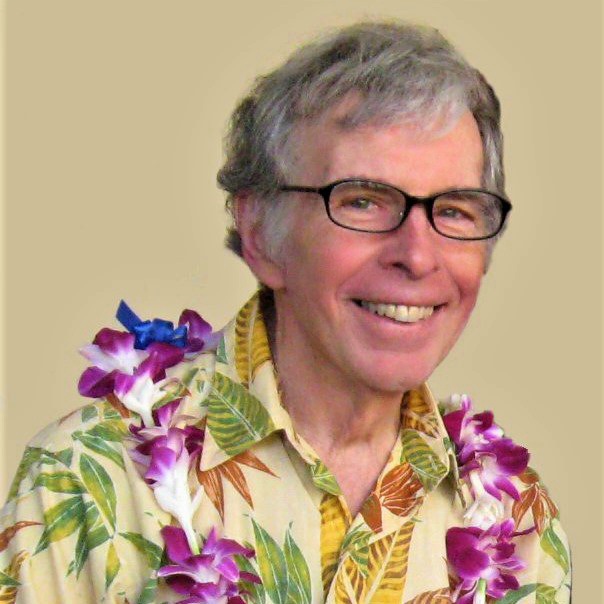
Both Wong and Apio studied with professor emeritus and founding Kumu Kahua member Dr. Dennis Carroll at university and credit him with broadening their artistic vocabulary while also expanding the definition of theatre that was accessible to locals in Hawaii. Their influences danced from the Oresteia to Meyerhold, from Viola Spolin to Joseph Chaikin and beyond. But at the heart of the work there was always Carroll.
At the crux of the trilogy is the Hawaiian concept of kuleana, a word which loosely translates to “responsibility” or “obligation,” though both Apio and Wong agreed that its meaning does not adequately translate into English. The concept refers to a recognized symbiotic relationship between a person and their community, family, occupation, and self. It is both one’s gift and one’s moral duty to those around them, and recalls that Hawaii was once a communal land system. Home and wealth were never meant to be inherited but instead shared, which makes it even more challenging for native Hawaiians to reclaim by ancestry; their language has no word for “own.” In this way, Wong explained, the Hawaiian way of life has been fundamentally changed by the competitive influence of capitalism and fee-simple land ownership.
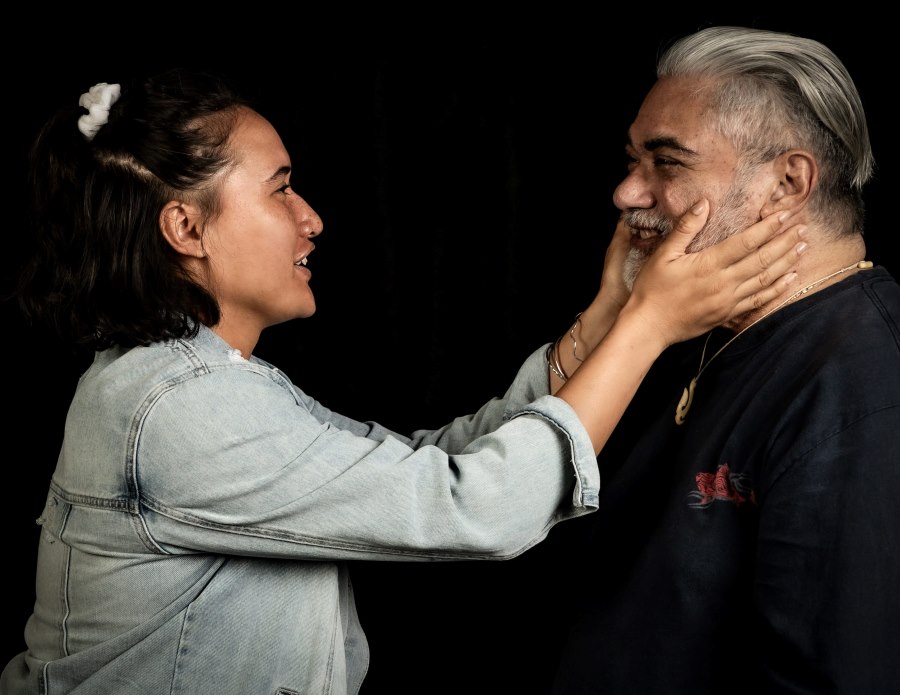
Sovereignty means different things to different people. At the risk of oversimplifying, some want independence for Hawaii; others want federal recognition similar to the protections applied to Native Americans and other Indigenous groups; still others want to live on the land their families have cultivated for generations. But it’s never that simple. Native Hawaiians now make up only 22 percent of the state’s overall population, primarily due to lack of affordable housing.
“This is where my family lived for five generations,” said Wong, gesturing out his window toward a mountain on the horizon, and to urbanized high rises ascending from the valley below. “I live in the same area that they were born in.” But it’s not the same as it was. He sees the trilogy as an opportunity, even a kuleana, to take back Hawaii’s story and share it with the delegations at FestPAC.
“For all of these characters,” Wong said, turning his thoughts to the plays, “it’s not just the trauma they remember. It’s a beautiful sunset that they remember. It’s a time when they could relax together. It’s a time when they weren’t in competition for something…Everybody remembers that, at some point, that’s the thing that was lost.”
Alexandra Pierson (she/her) is the associate editor of American Theatre.

